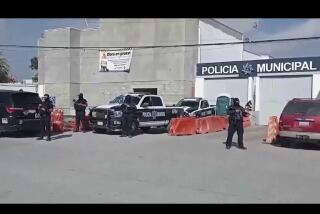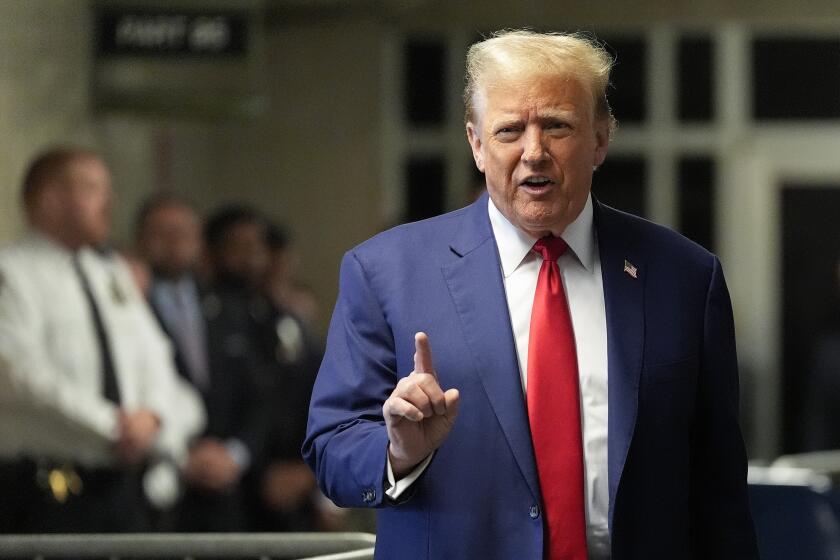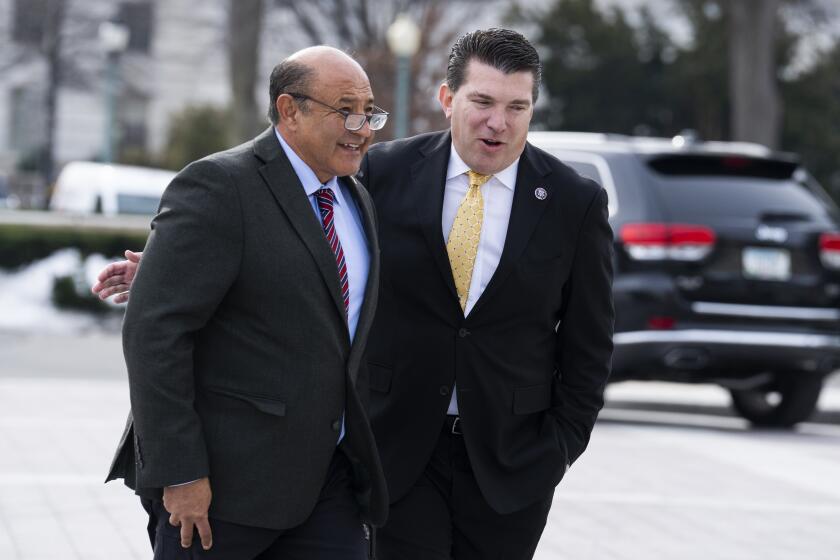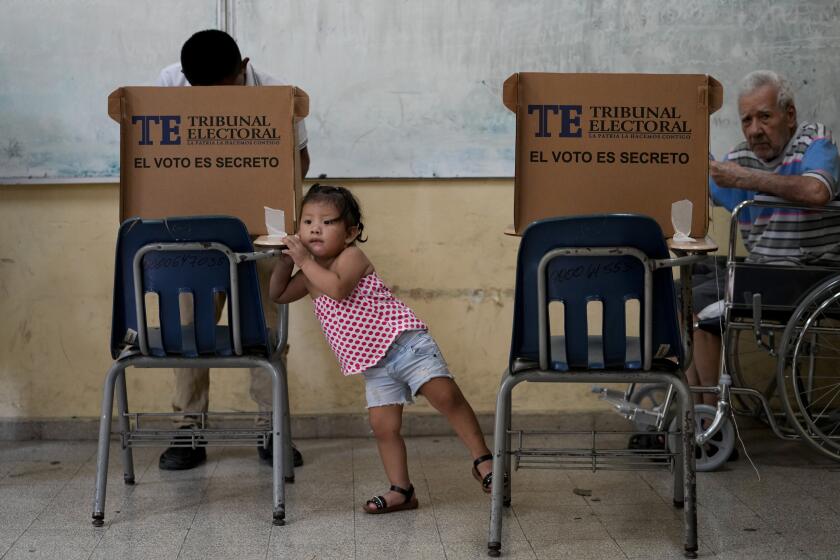War crimes hearing begins for soldier in Afghan deaths
The alleged ringleader of what authorities say was a rogue U.S. Army platoon in Afghanistan goaded his comrades into killing innocent Afghan civilians and threatened to kill a fellow soldier if he told anyone about drug use in the platoon, an Army investigator testified Tuesday.
Staff Sgt. Calvin Gibbs, facing three counts of murder in one of the most serious war crimes cases of the war in Afghanistan, produced a collection of severed fingers from Afghan corpses and, along with co-defendant Cpl. Jeremy Morlock, used them to intimidate Pfc. Justin Stoner, who already had been stomped and beaten by half a dozen members of his unit, Army investigator Anderson Wagner said his interviews revealed.
“After the assault, he claimed that he had his life threatened by Staff Sgt. Gibbs and Cpl. Morlock, when they produced severed fingers and told him if he didn’t want to end up like this guy, that he better keep his mouth shut,” Wagner testified.
Morlock, when he was brought in for questioning, was initially “scared for his own safety,” Wagner said, but eventually revealed that the platoon’s misdeeds had gone far beyond hashish smoking and the beating.
The 22-year-old soldier from Wasilla, Alaska, gave detailed accounts of the deliberate and apparently opportunistic killings of three Afghan men encountered by soldiers on patrols, which Morlock and others said were incited by Gibbs and then staged to look like defensive combat encounters.
“He just really doesn’t have any problems with … killing these people,” Morlock said in a taped interview introduced in the Article 32 hearing that began Tuesday to determine whether Gibbs, accused along with 11 other soldiers, should be tried in a full court-martial. The tape was not played in court but was obtained by ABC News.
Gibbs, 26, of Billings, Mont., is the highest-ranking of the 12 members of the 5th Brigade, 2nd Infantry Division platoon facing charges. Five of the 12 defendants are charged with murder.
The tall, lanky Gibbs sat clad in camouflage gear at the defense table surrounded by his lawyers. His wife, Chelsy M. Gibbs, sat quietly in the gallery.
In the case outlined in the greatest detail on Tuesday, investigators say they were told that Gibbs was on patrol May 2 and threw a grenade over a wall at an Afghan man, then directed Morlock and Spc. Adam Winfield to open fire on the man. Gibbs then is said to have planted a second, Russian-style grenade on the fatally wounded man.
“He pulled out one of his grenades, an American grenade, you know, popped it, throws it, tells me where to go to whack this guy, kill this guy,” Morlock said in his out-of-court statement.
Wagner and another Army investigator, Ismael Camero Jr., said investigators were told that Gibbs had a collection of “props” — illegally confiscated AK-47 rifles, C4 explosive, mortar rounds, a rocket-propelled grenade and a partial Claymore mine.
“Sgt. Gibbs had come up with different types of scenarios early on, where he and members of the platoon could basically kill people and get away with it,” Wagner said. “I mean, kill innocent people, noncombatants, and claim they were combatants.”
Camero said platoon soldiers told him the three killings identified in the charges were committed by soldiers on patrol on village perimeters, sometimes while senior officers were conducting meetings with village elders inside.
“People just respond to a gunshot or a grenade. We present them with a scenario, and nobody ever questioned it,” Camero said he was told by Morlock.
In the May incident, village elders later complained to Army officials that the dead man was not an insurgent but a religious man, Wagner said, but military investigators never got the authority to go back to the village and conduct detailed interviews with Afghan residents.
Later, unit commanders went back and talked to village elders to get their views of the shooting, but it was primarily “to convince them it was a legitimate killing,” Wagner said.
Repeatedly, fellow soldiers have identified Gibbs as the instigator of the killings. He kept his collection of severed fingers wrapped in cloth in a plastic water bottle and also had removed some leg bones from an Afghan grave which he sometimes pulled out and played with, rotating the joint, they said in interviews with investigators.
But Gibbs’ lawyer, Phillip Stackhouse, has said that all the deaths Gibbs is charged with were “appropriate engagements” that occurred during the course of combat.
During cross-examination of the investigators, Stackhouse repeatedly tried to highlight the failure of the Army criminal inquiry not only to interview any Afghan witnesses, but also to conduct any but the most basic forensic examination of the purported murder scenes.
Only in one case — the grenade incident — did investigators travel to where the killing had occurred, and they identified neither evidence of blood nor any grenade shrapnel, investigators acknowledged under questioning.
Afterward, the photos they took at the scene had been inexplicably deleted from the camera and also from a backup hard drive, investigator Donna Trantham testified.
Morlock, whose hearing was in September, has already been ordered to undergo a full court-martial. He has told investigators and his lawyer that he feared reprisals from Gibbs if he didn’t go along, or became a “snitch.”
More to Read
Start your day right
Sign up for Essential California for news, features and recommendations from the L.A. Times and beyond in your inbox six days a week.
You may occasionally receive promotional content from the Los Angeles Times.






